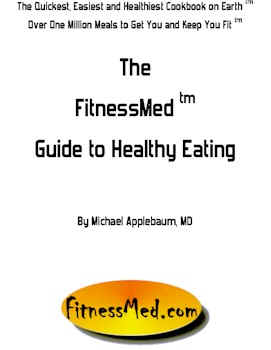Don't.
Go ahead and overindulge. It is the holiday season.
At the end of this posting, I will provide a guide on how best to overeat, IMHO.
As the holiday season approaches, celebrations will be full of good cheer, family fun, and most of all food. But how can we enjoy ourselves without popping a button?
Though the holidays are joyful, the average American gains an average of 10 pounds during this time of year.
Here is the way to really celebrate:
The
FitnessMed tm Guide To Overeating For The Holidays
The holiday season is near or here and calls for you to do anything but celebrate with festive meals can be heard from the Grinches everywhere.
This is madness.
As if two or three days of celebratory eating will make you fat for an entire year.
One day is 0.27% of a year.
Let’s assume there are three holidays for overeating: Thanksgiving, Xmas and New Years.
Three days constitute a mere 0.82 % of a year.
The fact is that diligence and eating for health, which means eating for a BMI between 18.5 and 24.9, are what a person should do the OTHER days of the year, the other 99.18% of the year.
Repeat – the rest of the year is 99.18%.
You have to be a hard-core sadist to suggest that people give-up celebrating their holidays with festive meals because whatever they do calorically for less than 1% of the year will “ruin their lives.”
Do not believe that drivel.
A holiday is a holiday.
Enjoy!
In the spirit of celebration, FitnessMed, Inc., is happy to bring you this guide on how to overeat for the holidays.
Not only will the strategies here help you overeat so you gain the least weight, it will explain to you how you can overconsume up to 33% more Calories without gaining more weight than you would otherwise.
This translates into more turkey, ham, sweet potatoes, stuffing, etc.
Ready?
Here goes.
When you overconsume Calories, i.e., eat more Calories than your body burns, those excess Calories get stored as fat.
There is no way around this.
To store the extra Calories as fat, your body has to convert the excess food you eat into body fat.
Even though all food Calories are equal, storage of Calories is not.
Overeaten Calories that come from fat are stored more efficiently than overeaten Calories that come from carbohydrate or protein.
What this means is that if you overeat 100 Calories as fat, 97 of them will get stored on your body.
If you overeat 100 Calories as carbohydrate, 75 of them will get stored on your body.
Thus, almost 100% of overeaten fat ends up on you, while only ¾ of overeaten carbohydrate is what you end up wearing. For protein, the number is even less.
This means that you can overeat about 1/3 more Calories as carbohydrate and be no worse off than had you overeaten the Calories as fat (from a weight perspective).
133 Calories x 75% = 99.75 Calories.
So instead of overeating 100 fat Calories and adding 97 Calories of body fat, you can overeat 133 carbohydrate Calories and add about the same number of Calories as body fat.
The trick here is to overeat the Calories as pure carbohydrate and/or protein as possible.
This is not a difficult trick.
Skinless turkey, lean ham, stuffing moistened with fat-free broth and fat-free butter instead of oil, fat-free butter on rolls, fat-free sour cream on potatoes and substituting fruit purees for fat in baked goods (yes, it works – search online for “fat substitutes in baking”) are examples of ways to add more carbohydrate/protein and less fat to your holiday fare. (search online for “fat substitutes in cooking” for more ideas)
Granted the taste of the foods may be different.
However, if someone is interested in reducing their Calories from fat and being able to overeat even more if they choose, the price is much smaller than reducing the festivity of celebrating with food.
It is also smaller than experiencing the day-after guilt.
Besides, just because the taste may be different does not mean it will be less enjoyable. It might even taste better to you.
The only way to find out is to try.
Give it a whirl.
And enjoy the holidays!
Your friends at FitnessMed, Inc.


















